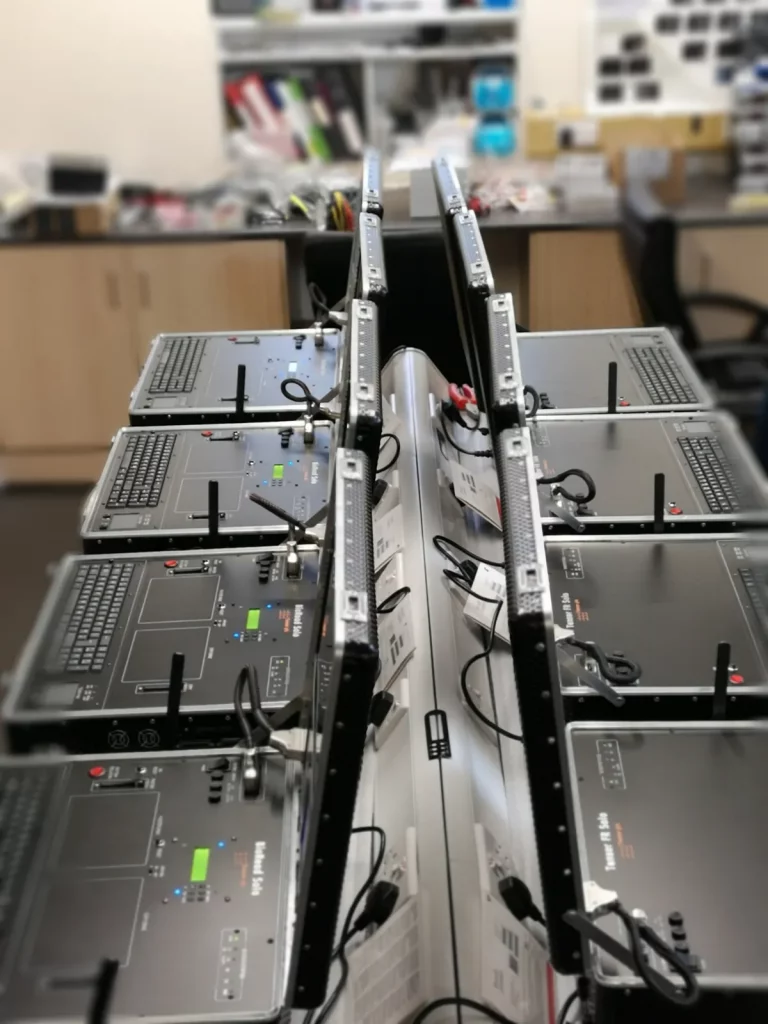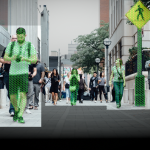In an era where criminal investigations demand speed, accuracy, and flexibility, the convergence of crime scene forensics and cloud technology solutions is proving to be a game-changer. This article explores how the specialist provider Daetech Systems (UK) Ltd (via its partnership with Cognitech Inc) is delivering cloud-based forensic video and image processing tools that empower investigators anywhere, anytime. We’ll break down the benefits, use-cases, key features, challenges and best practices — in plain language for beginners and stakeholders alike.
The Forensic Challenge: Crime Scenes in the Digital Age
Traditionally, forensic investigators arriving at a crime scene would collect physical evidence—photographs, video, CCTV footage, and other digital data. They’d then transport it to a lab for processing and analysis. But today’s investigations are faster, more distributed and more digitally intensive:
- CCTV and body-worn cameras generate massive volumes of video footage.
- Sources are geographically dispersed: traffic cams, drones, mobile phones, IR-cams.
- Investigators often work remotely, collaborating across agencies or jurisdictions.
- Data sensitivity is elevated: chain of custody, data integrity, and authorization matter more than ever.
Hence, the phrase “crime scene forensics” now includes subtle digital-forensic workflows: video/image enhancement, authentication, scene reconstruction, chain-of-custody tracking, and rapid reporting.
Enter Cloud Technology Solutions
cloud technology solutions have transformed how organisations access, process and share computing resources. When applied to forensic workflows, cloud solutions bring specific advantages:
Scalability & Accessibility
With cloud-based services you can access powerful forensic tools without requiring a high-end workstation on-site. For example, Daetech’s offering of My Cognitech Cloud (MC2) enables remote access via web browser or desktop app.
Investigators can upload footage, perform enhancement and download results — all without having to install and maintain specialised software for each machine.
Cost Efficiency
Instead of buying and installing perpetual licenses and hardware for every forensic lab, subscription-based cloud access allows agencies to use “software as a service” (SaaS) when needed. The MC2 model shows month- and year-based access tiers.
Security & Integrity
Forensics demands high standards of data security: chain of custody, non-alteration of evidence, logging of actions, validated tools. Cloud providers can build dedicated secure infrastructures, encrypted storage, and audit logs. Daetech emphasizes “secure transfer protocol” and “leaving no trace of data on the Cloud” after download.
Global Collaboration & Remote Work
Investigative teams may span locations, jurisdictions, or agencies. Cloud platforms allow remote access to the same tools and data, enhancing collaboration. For example, MC2 supports servers in multiple regions (North America, East Asia) to facilitate global connectivity.
How Daetech Systems Bridges Crime Scene Forensics with Cloud Solutions
Daetech Systems (UK) Limited specialises in providing evidence retrieval, processing and intelligence gathering solutions for law enforcement, military and government agencies.
Specifically:
- They distribute Cognitech’s forensic video & image tools (enhancement, authentication, analysis).
- Their cloud offering (My Cognitech Cloud) allows users to access these tools via the cloud with minimal local hardware requirements.
- They emphasise “upload, process, download” workflows that leave no residual data in the cloud, catering to chain of custody and evidence integrity.
Use Case Example
Imagine a traffic-camera captures an incident. Investigators upload raw footage into the MC2 environment, run enhancement filters (de-blur, denoise), perform image authentication to validate evidence integrity, and download enhanced video for inclusion in reports or court. They do this without having the high-performance hardware at the local site.

Benefits for Investigative Teams
- Faster turnaround from crime scene to usable evidence.
- Reduced need for multiple onsite high-end workstations.
- Access from remote locations (field, home, different agency).
- Integrated forensic toolset: enhancement + authentication + reporting.
- Maintain strong chain-of-custody by using secure protocols and centralized logging.
Key Features to Look For in Cloud-Based Forensics Tools
When selecting a solution that merges crime scene forensics with cloud technology solutions, you should consider features like:
- Web-based access: As Daetech’s MC2 demonstrates, being able to launch tools via browser or lightweight client is vital.
- Secure data transfer and storage: Encryption in transit and at rest, secure upload, audit logs, and deletion of residual data.
- High-end processing capabilities: De-blurring, denoising, image authentication, metadata analysis, 3D fusion etc. (MC2 offers “Deblur, Denoise… 3D FaceFusion” features in pro tier)
- Scalability and regional availability: Servers located in multiple regions to minimize latency and accommodate global teams.
- Subscription pricing/ flexible access: Allows smaller agencies to access premium forensic tools without large capital expenditure.
- Audit trail/chain-of-custody support: Tool must support forensic-quality logging, ensure evidence integrity, and comply with legal standards.
- Minimal local hardware burden: The cloud model shifts heavy compute to server infrastructure, permitting use of lightweight client devices.
Challenges & Considerations
While promising, the convergence of crime scene forensics and cloud technology solutions also presents challenges:
- Data bandwidth & size: High-resolution video files are large. Upload/download times and latency can be bottlenecks, especially in less-endowed field environments. Daetech recommends minimum Internet speeds (e.g., 5 Mbps download / 1 Mbps upload) for their MC2 platform.
- Jurisdiction & data sovereignty: Evidence may cross borders; cloud servers may reside in various regions. Agencies need clarity on data-location, legal jurisdiction and compliance with local law.
- Security risks: Though cloud providers implement strong security, moving evidence off-site (even in secure cloud) introduces new risk vectors—insider threats, cloud misconfiguration, or shared infrastructure vulnerabilities. (General research in cloud intrusion detection highlights such risks.)
- Change management & training: Forensic personnel may be accustomed to on-premises labs; shifting to cloud-based workflows requires training, process re-engineering and acceptance.
- Cost over time: While initial cost is lower, subscription fees, data storage growth and long-term retention can accumulate. Agencies must model total cost of ownership.
Best Practices for Agencies Using Cloud-Enabled Forensic Solutions
To maximise value and maintain forensic integrity, agencies should adopt best practices:
- Define governance & policy: Determine which data may be uploaded, how long stored, who can access, how deletion is handled, and which regions/global servers may be used.
- Ensure minimum network requirements: For field use, ensure adequate upload/download speed and contingency plans (e.g., local caching) if connectivity is limited.
- Use validated tools suited to legal standards: Ensure the cloud-based forensic tools (e.g., from Daetech/Cognitech) are validated, documented and accepted by courts.
- Maintain chain-of-custody workflows: From upload to processing to download, audit logs must be kept, access controlled and data integrity preserved.
- Plan for data retention & deletion: Large volumes of evidence accumulate. Cloud platforms must support retention scheduling, archiving, and secure deletion of residual copies.
- Train staff and run pilot projects: Introduce cloud forensic workflows gradually, evaluate performance, usability, cost and update standard operating procedures accordingly.
- Evaluate latency and region-specific performance: When working across jurisdictions, select regions close to field operations or ensure caching to reduce latency. For instance MC2 mentions region-specific server availability.
- Remain cognizant of compliance and regulation: Especially for cross-border data transfers, encryption, privacy laws and evidence-handling protocols must be followed.
Future Directions: Where the Field is Heading
As technology advances, we can expect further integration of cloud technology solutions with crime scene forensics:
- Edge-to-Cloud workflows: Field devices (bodycams, drones) perform preliminary processing at the edge, then handoff to cloud for heavier analysis.
- AI-powered forensic cloud services: Automated detection of faces, object recognition, event summary, anomaly detection.
- Collaborative forensic platforms: Multiple agencies sharing cloud-based forensic workspaces, enabling joint investigations.
- Enhanced mobile access: Investigators in the field using tablet/phone apps linked to cloud services for rapid triage.
- Standardisation and interoperability: Forensics-friendly cloud standards for evidence formats, metadata, chain-of-custody across platforms.
- Global forensic-cloud science labs: Combining worldwide datasets, forensic-processing algorithms served via cloud, shared R&D among agencies.
With its long history (founded in 1988, Cognitech being a pioneer in forensic video investigation) and a large patent portfolio, Daetech/Cognitech are well-positioned in this wave.
Conclusion
In short, the intersection of crime scene forensics and cloud technology solutions opens a new frontier: faster, more flexible, more collaborative investigations without sacrificing the rigour that forensic science demands. For agencies looking to modernize their tool-chain, platforms like those provided by Daetech Systems offer a compelling example: cloud-enabled forensic video/image processing, secure data workflows, remote access and subscription-based scalability.






